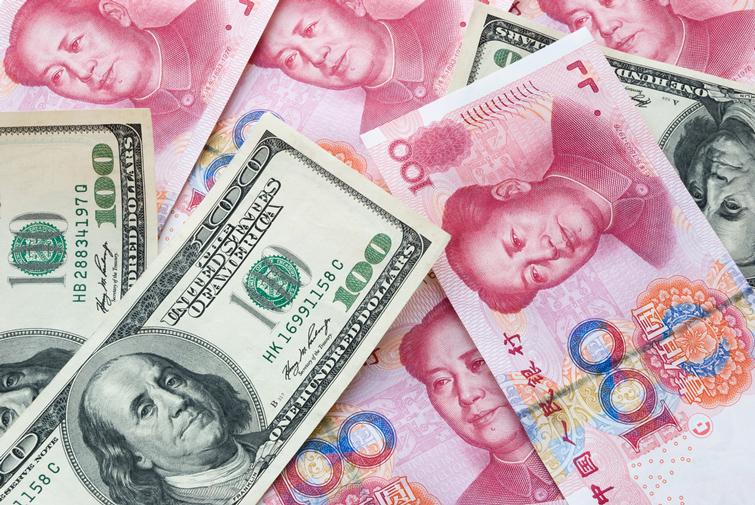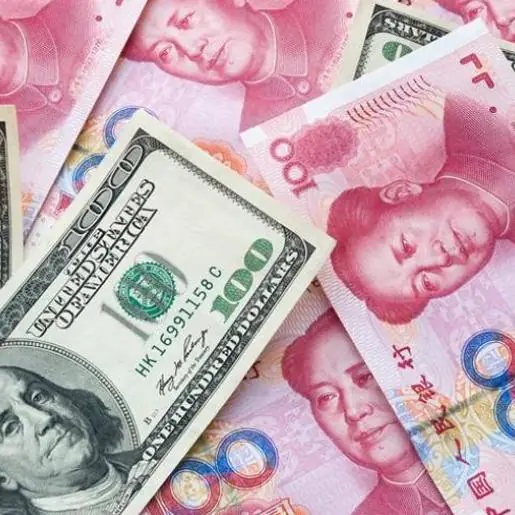
This time last year, the Chinese government put the brakes on economic activity in order to put all its efforts into controlling the spread of the virus. Vigorous economic stimulus policies were retained, and the economy quickly bottomed out. By the fourth quarter of 2020, GDP growth had rebounded to 6.5%, and annual GDP growth reached 2.3%. China was the only large economy in the world to have ended 2020 with economic growth.
But an extreme situation now faces China: a flood of global liquidity. The world’s major economies are resorting to a host of loose monetary and fiscal policies. Quantitative easing becomes ever roomier, and central banks are fast and loose on the policy end. The intention is to stimulate investment and accelerate economic development. However, the central banks of countries in Europe, the United States and Japan can determine the amount of currency or the short-term interest rates in their jurisdiction, but without capital controls, these central banks are powerless to determine where the money will eventually flow. As a result, stocks, foreign exchange markets, commodities, and even Bitcoin is now awash with money and asset prices are rising.
We have seen this kind of thing in the past. At the beginning of the 21st century, when Alan Greenspan was in charge of the Federal Reserve, the Fed’s interest rate dropped to an all-time low of 1% and stayed there for over a year. Low interest rates meant the US real estate market thrived. At the same time, real estate assets improved their liquidity when financial innovation entered the financial markets. After Bernanke became chairman of the Federal Reserve, inflation and other factors resulted in the Federal Reserve raising interest rates again. Unexpectedly, the interest rate hike soon pierced the real estate bubble in the United States, and housing prices began to fall. The fall in housing prices led to a decline in the value of all financial products based on these assets, and investors who held such assets suffered huge losses. This crisis in the U.S. was later seen as the worst financial crisis since the Great Depression.
Extremely loose macroeconomic policies are originally implemented to stimulate domestic economic growth, but because most developed countries permit free cross-border capital flow, international capital is not bound by borders. There is no doubt that China is one such country to which capital will flow for three reasons:
First, China’s interest rates are higher than those of most developed countries. In the current situation, interest rates of developed countries are extremely low, and the interest rates of national debt are often in negative numbers, while China’s are still positive. This clearly increases the interest rate differential between the two sides and draws hot money to China.
Second, the recent capital inflows has pushed up the RMB exchange rate, which increases the attractiveness of RMB assets to overseas hot money.
Third, with the current global economic structure, China may maintain a relatively high economic growth rate over the next five years, which provides a good rate of return for capital. One reason why international capital is pumped for China.
In a world flooded with liquidity, China’s economy is being severely tested. From a macro perspective, the challenges facing China come from at least two dimensions. First of all, China’s economic growth trajectory is steep and there is a risk of overheating. Under such circumstances, foreign capital inflows will further increase the risk of overheating. To combat this risk, the People’s Bank of China (PBOC) must maintain higher interest rates for longer or even raise them further. However, maintaining or expanding the existing domestic and foreign interest rate differentials will in turn provide impetus for the continued inflow of foreign capital. If the PBOC also wants to maintain the relative stability of the RMB exchange rate, China will likely enter a cycle of overheated economy, which in turn will lead to raising or maintaining high interest rates that will attract foreign investment and ultimately leading to an overheated economy. This means that unconventional policies must be adopted to maintain macroeconomic stability.
If China’s macroeconomic decision-makers were to allow the RMB to appreciate to address the large-scale influx of foreign capital, an austerity effect would ensue: the appreciation of the RMB would have a negative impact on exports and promote imports, reducing net export growth as well as domestic employment. In addition, when the RMB appreciates, the cost of foreign investment in Chinese assets will increase, and the rate of return on investment in China will therefore decrease. This will play a role in easing the inflow of foreign capital.
The economy rebounded strongly in the latter part of last year, with a lot of help from exports. Now the inflow of foreign capital puts pressure on RMB appreciation. If we allow this to continue, it will reduce pressure on foreign capital inflows, but will hit exports and economic growth. If we do not allow for the appreciation of the RMB, foreign capital will keep wading into the country, because foreign investment expectations will remain high for the appreciation of the RMB. In short, the current situation is a dilemma for the RMB, and there is no easy choice.
On a micro level, China also faces challenges. Some Chinese companies now value the low interest rates of overseas US dollar bonds, so they are heavily borrowing low-interest US dollar bonds, but the business activities of these companies are all settled in RMB. In other words, these companies have RMB on the asset side and US dollars on the liability side, which constitutes a currency mismatch on the balance sheet. When capital flows in and the currency appreciates, this kind of operation is profitable, but when capital flows out and the currency depreciates, the company’s balance sheet will suffer, and financial crisis may result. Examples of this happening abound in the history of international finance, most applicably in the 1997 Asian financial crisis.
International capital now favors China and is willing to come to China, but many of this is short-term and unstable. China cannot always be in such a position to attract foreign investment, and the Chinese economy also has a series of structural problems. If the situation really changes one day, then the Chinese economy will be completely exposed to the risk of financial crisis. Therefore, to maintain national financial stability and security, such currency imbalances must be addressed.




















